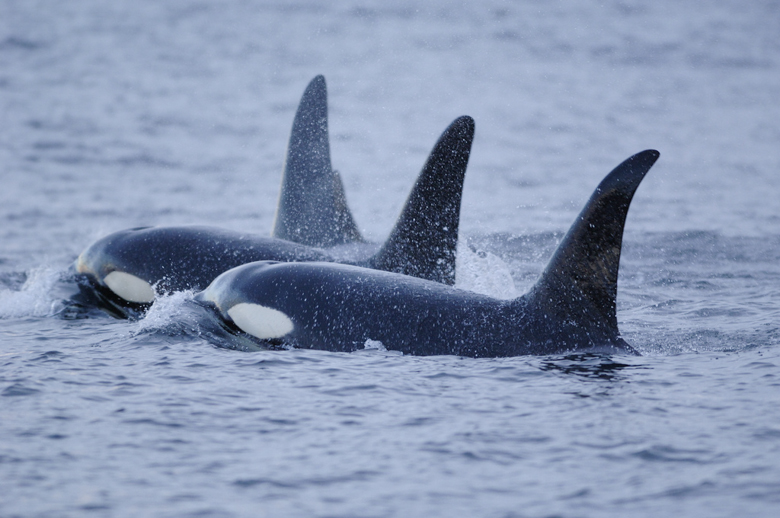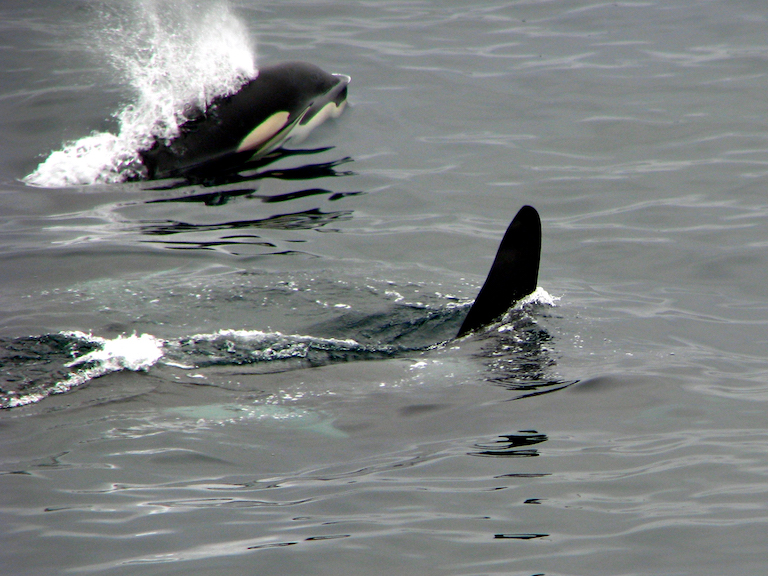- Mammal-eating orcas and Caspian seals were recently listed as endangered species by Russia, following the “whale jail” debacle that raised international concerns.
- This is the first time in more than 20 years that the Russian government has updated its red book of locally threatened species, so conservationists and animal advocates see this latest move as an enormous victory.
- This is also the first time that Russian authorities have acknowledged that there are two ecotypes of orcas — mammal-eating orcas and fish-eating orcas.
- Experts say they believe the new red book listings will put a halt to the international trade of orcas captured in Russian waters, although belugas may still be trafficked.
While the world’s been focused on COVID-19, a piece of good news came out of Russia last month, although it went relatively unnoticed: Russia listed mammal-eating orca whales and Caspian seals as locally endangered species, following the “whale jail” fiasco that generated international outrage.
“It’s a huge event,” Dmitry Lisitsyn, director of Sakhalin Environment Watch, a nonprofit group that helped facilitate this process, told Mongabay. “It’s a very important milestone in environmental protection efforts and biodiversity protection conservation in Russia.”
This is the first time in more than 20 years that Russia has added to its endangered species list — known as the red data book of the Russian Federation (RDBRF), or simply, the “red book” — and could end the trade of Russian orcas to aquariums around the world, experts say.

In late 2018, drone footage revealed 87 beluga whales (Delphinapterus leucas) and 11 orcas (Orcinus orca) trapped in tiny sea pens in the icy waters of Srednyaya Bay in Russia. The cetaceans had allegedly been caught during the previous summer, and they were suffering through the winter months in what was dubbed to be a “whale jail” while traders negotiated the sale of these animals.
It has always been illegal in Russia to capture and trade cetaceans for entertainment purposes, although they can technically be caught and used for “educational and cultural purposes,” Naomi Rose, marine mammal scientist at Animal Welfare Institute (AWI), told Mongabay. This loophole is what Russian traders have historically exploited.
News of the “whale jail” traveled around the world, which led Russian President Vladimir Putin to intervene, launching an investigation into the cetaceans’ capture. Russian authorities eventually signed an agreement with U.S.-based nonprofits Ocean Futures Society and The Whale Sanctuary Project in April 2019 to release all of the animals back into the ocean.
“Whether they all survived the release, I can’t tell you, but they were all released,” Rose said.

These new red book listings are a big deal for a few reasons. For one, this is the first time Russia has acknowledged that there are two ecotypes of orcas — mammal-eating orcas (also known as Bigg’s orcas), and fish-eating orcas (also called resident orcas).
“This is unprecedented,” said Rose, who is also an acting member of the International Whaling Commission Scientific Committee. “They [Russian authorities] have been very resistant … to that concept that there are ecotypes of orcas, and this goes right up to the international level.”
Secondly, the new listing essentially puts a stop to the global trade of orcas captured in Russian waters. As Rose explains, the Sea of Okhotsk is the sole place in Russia where it’s logistically feasible to capture orcas, and the only orcas living in this area are the mammal-eating kind.
“That’s the whole point of this,” Rose said. “They clearly meant this listing to affect the captures and the trade. And again, that’s a huge breakthrough for the Russian government to recognize that they’re actually protecting the whales that are being targeted by the capture operators.”

Of course, it’s theoretically possible for traders to find ways to catch fish-eating orcas, which aren’t listed as endangered species in the red book, although achieving this wouldn’t be easy, Lisitsyn said.
“It’s much more difficult to catch the fish-eaters [orcas] … because they live in the open sea in the very deep sea, and it’s difficult to surround them by the nets and difficult to approach them quickly,” Lisitsyn said. “When they are surrounded by the nets, the orcas can easily dive deeply and just go away.”
While there are no reliable population estimates of orcas in Russian waters, it’s believed that there are up to 3,000 mammal-eating and fish-eating orcas in the area, Rose said.
Mammal-eating orcas’ new status as endangered species probably won’t affect the 18 Russian-caught orcas currently in captivity in Russia and China, Rose said.

As for the Caspian seal (Pusa caspica), the red book listing should protect this tiny animal from the hunting and commercial fishing activities that have threatened the species in the past. The Caspian seal population in Russia had shrunk more than 90% by the start of the 21st century, according to a new report by WWF, and it’s been listed as an endangered species by the IUCN since 2008.
Belguas, however, don’t currently have any protection within Russia, and traders may continue to target them.
“The orca trade is over in Russia, legally, but the beluga trade could start up again after the pandemic, but it shouldn’t,” Rose said. “Coronaviruses are carried by cetaceans. They’re not necessarily zoonotic [transmissible to humans], but they could mutate one day.”
While the pandemic seems to be halting the global trade of cetaceans, at least for this year, Rose says she hopes to see a permanent ban.

“What we’re trying to do is point out that it’s the live wildlife trade that causes pandemics,” Rose added. “The live animal trade is pretty much what has caused every recent pandemic we’ve had — SARS, MERS. And certainly the live wildlife trade is the most likely source of novel viruses or novel pathogens that can really do a lot of harm because we don’t have any natural immunity to them.
“It’s got to stop, and that’s our message if the world will listen to us.”
Banner image caption: An orca family in the South Shetland Islands, Antarctica. Image by Alex Cowan / Flickr.
